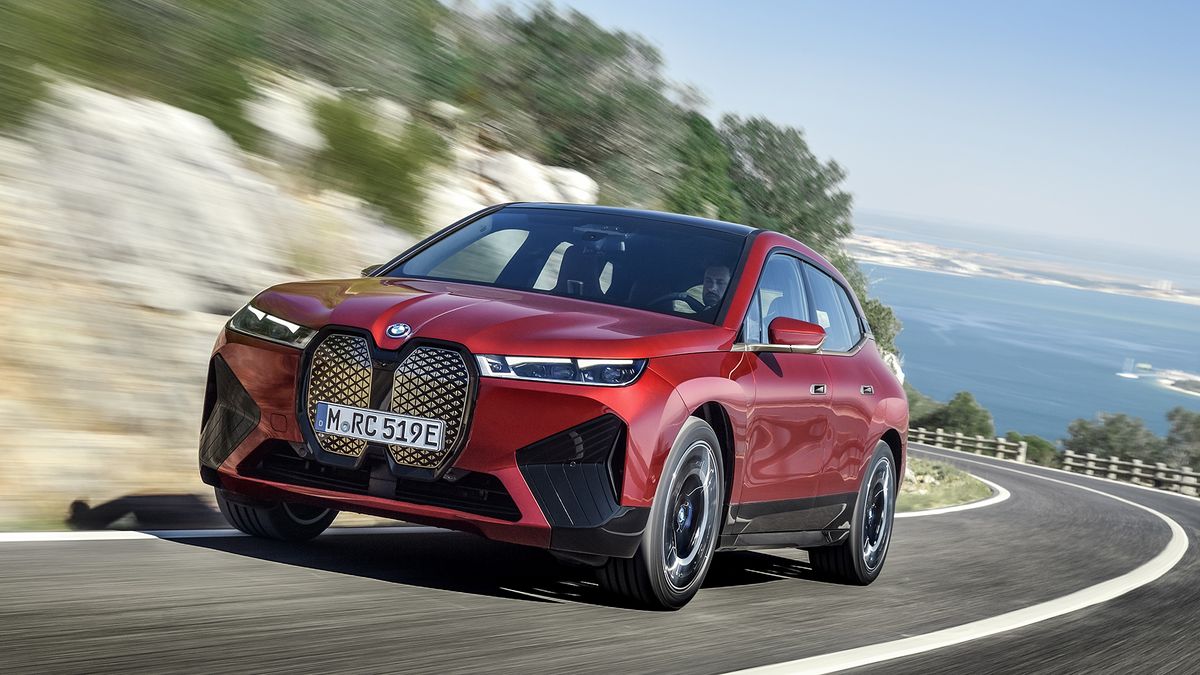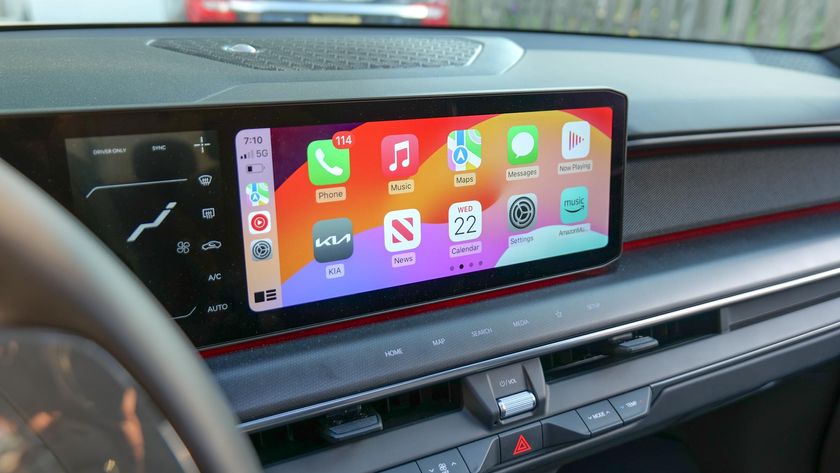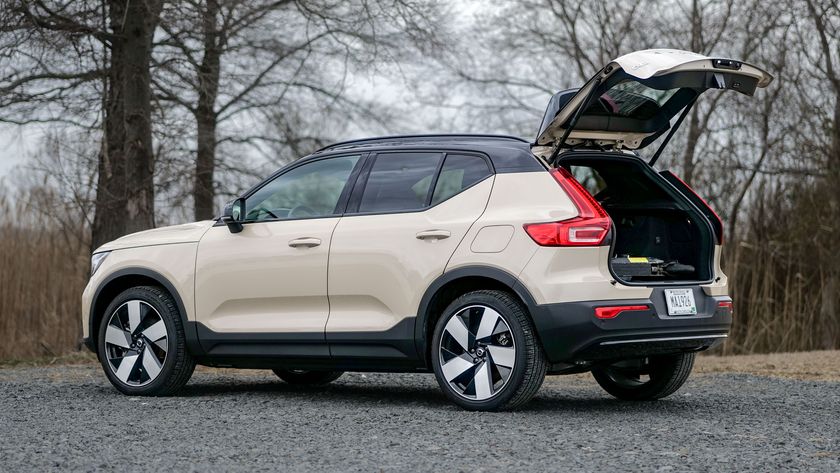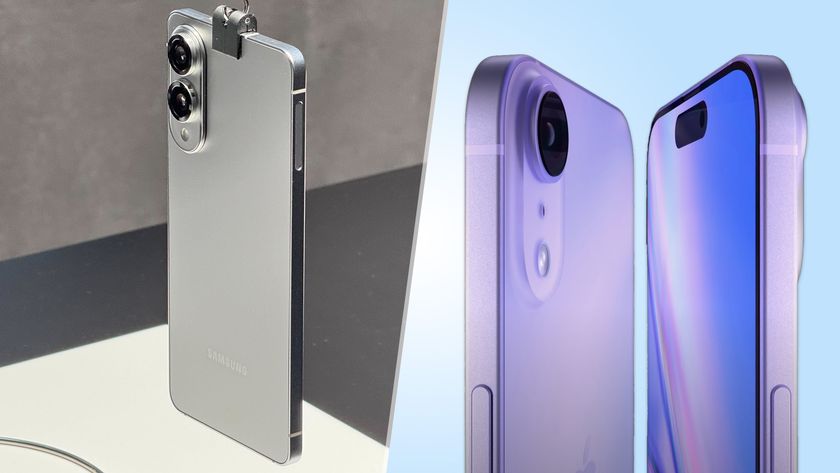Sorry BMW, a 373 mile EV range cap is a terrible idea
Automakers should be pushing EV range to its absolute limit

Update: We've driven the BMW i4 M50, and despite BMW executives funny ideas about maximum range, it's still a fantastic car.
Range is one of the most important features in an electric car, especially since recharging still takes significantly longer than refilling a tank of gas. So it makes sense that automakers would do everything they can to ensure their EVs need recharging as little as possible.
But now we’re starting to see some word of range caps coming into force, wherein a car manufacturer will avoid adding more range once they reach a certain point. Tesla has (unofficially) done it, and now BMW might be at it as well.
And it’s a terrible idea.
- How long does it take to charge an electric car? What you need to know
- here are the best electric cars you can buy right now
- Plus: Elon Musk only wants good drivers in Tesla's Full Self-Driving beta
According to Which Car? BMW i4 project leader David Ferreufino has gone on record to say that the company has no plans to build an electric car with more than 600 kilometers (373 miles) of range. Plug-in hybrids are also going to have a maximum range of 100 kilometers (62 miles).
Meanwhile, Elon Musk made comments about extended range when he announced the Tesla Model S Plaid Plus was being cancelled. Musk’s official reason for cancelling the Plaid Plus was that the standard Plaid is “just so good”, despite the fact that the Plus model was more powerful and offered 520 miles of range.
When asked about the range factor, Musk added that having more than 400 miles of range isn’t necessary — because nobody can drive that far without stopping for a break. The implication is that this break will also coincide with a quick recharging session.
Sign up to get the BEST of Tom's Guide direct to your inbox.
Get instant access to breaking news, the hottest reviews, great deals and helpful tips.
Faster recharging is only half a solution
And Musk is right, up to a point. Driving 400 miles at 70 miles an hour is still nearly six hours of driving. Even if you magically don’t need to use the bathroom at that time, it’s still a good idea to pull over and take some sort of break. Of course, it assumes that the charging infrastructure is in place to actually let you.
As much as EV charging infrastructure has improved over the past decade, the chargers are not exactly ubiquitous. Certainly not when you compare them to gas stations. Even Tesla’s own Supercharger network, while pretty widespread in the United States, isn’t available everywhere. The longer the range on your car, the more versatility you have when picking and choosing where to recharge.
Time is also a factor that needs to be considered. Recharging an electric car takes longer than filling up a gas tank, even with today’s extraordinarily fast rapid chargers. Even the Tesla Model S Long Range, with 405 miles of charge, takes over half an hour to fully recharge.
Sure, you can add 200 miles of power in just 15 minutes, but on a long enough journey that just means you need to stop even sooner than you would have.
That 15-minute measurement also relies on you being able to get the 250 kW maximum recharging speed. Tesla Superchargers have to share power, and the more cars that are plugged in the more your overall charging speed drops — which increases overall recharge time. This is also assuming the car isn’t plugged into a different network using the $400 Tesla/CHAdeMO charger that has a 50 kW speed limit.
Having longer range means you don’t have to stop nearly as often, which can be a major time saver — especially on those really long road trips.
Boosting range isn't easy
To be fair, 400 miles is a very long way. It’s enough to get you from Los Angeles to San Francisco with 17 miles to spare, or London to Edinburgh with about four miles left. But when you’re talking about spectacularly large countries like the U.S. or Australia, which are a respective 2,800 and 2,485 miles across at their widest points, 400 miles is basically nothing in comparison.
Unfortunately, maximizing range is a balancing act. Longer range cars typically need larger batteries, which drives up the price quite considerably. Automakers also need to engineer their cars to be as light and aerodynamic as possible, so all those watts can be used to travel further instead of cutting through the air.
Advances in battery technology can be a big boost here. Earlier this year, at its battery day presentation, Elon Musk spoke at length about how Tesla had been improving its battery chemistry to store (and utilize) more power in a smaller space.
Smaller batteries are lighter, and pulling this off would mean there’s less weight to lug around without necessarily sacrificing the amount of power available. Though they can't solve the problem of automakers placing arbitrary caps on range.
There are always going to be physical limitations on how far an electric car can go, but that’s also true of gas-powered cars. After all, like the battery, a gas tank can only be so big. Likewise, price and cost-effectiveness also has to be considered. A 1,000- mile range would be amazing, but it’s absolutely pointless to get there if the general public are priced out, or the size of the battery makes it impractical.
What I’m saying is that range should not be limited by people and decisions. Having more range is always a good thing, provided it’s balanced with the rest of a drivers’ needs, and automakers should always be striving to make their cars go as far as possible. Whether that’s maximizing aerodynamics, improving overall energy efficiency or developing better batteries.
Bottom line
Hopefully, the fact other automakers have, as far as we know, not mandated similar range caps as BMW suggests that this won’t be a long-term issue. Even Tesla itself has ignored Musk’s argument with the Cybertruck and Roadster, which promise to have a respective 500 and 620 miles of range.
Unfortunately, very few electric cars can hit 600km/373 miles right now, let alone 400 miles. The Tesla Model S and Ford Mustang Mach-e can all hit that distance, while the Tesla Model 3 Long Range comes close at 360. More are coming in the near future, like the Rivian R1T and the Lucid Air, but the majority of long-range EVs seem to tap out before they hit the 350-mile mark.
Let’s just hope automakers keep pushing those limits, rather than throwing in the towel and declaring what they have is good enough.

Tom is the Tom's Guide's UK Phones Editor, tackling the latest smartphone news and vocally expressing his opinions about upcoming features or changes. It's long way from his days as editor of Gizmodo UK, when pretty much everything was on the table. He’s usually found trying to squeeze another giant Lego set onto the shelf, draining very large cups of coffee, or complaining about how terrible his Smart TV is.












